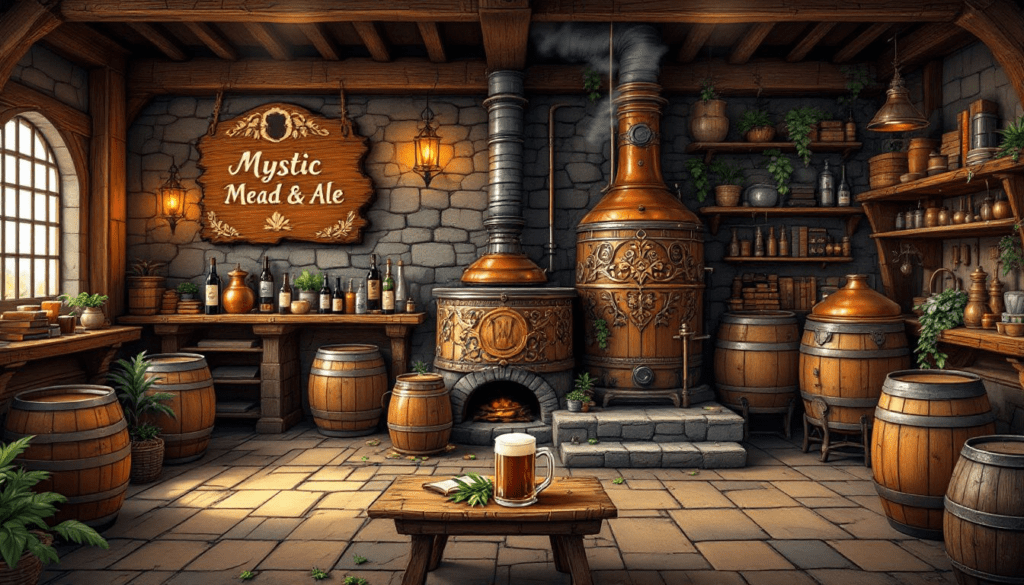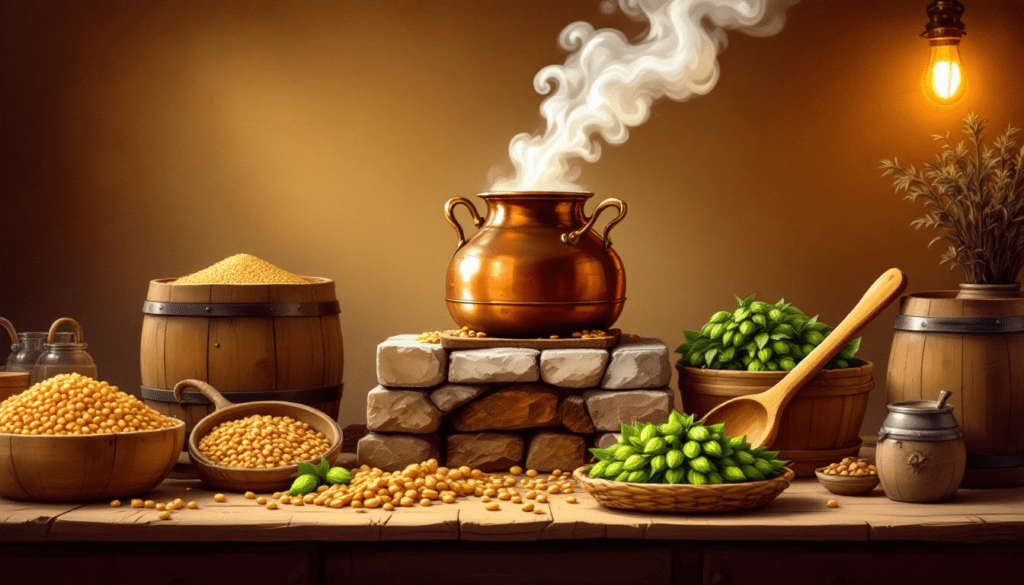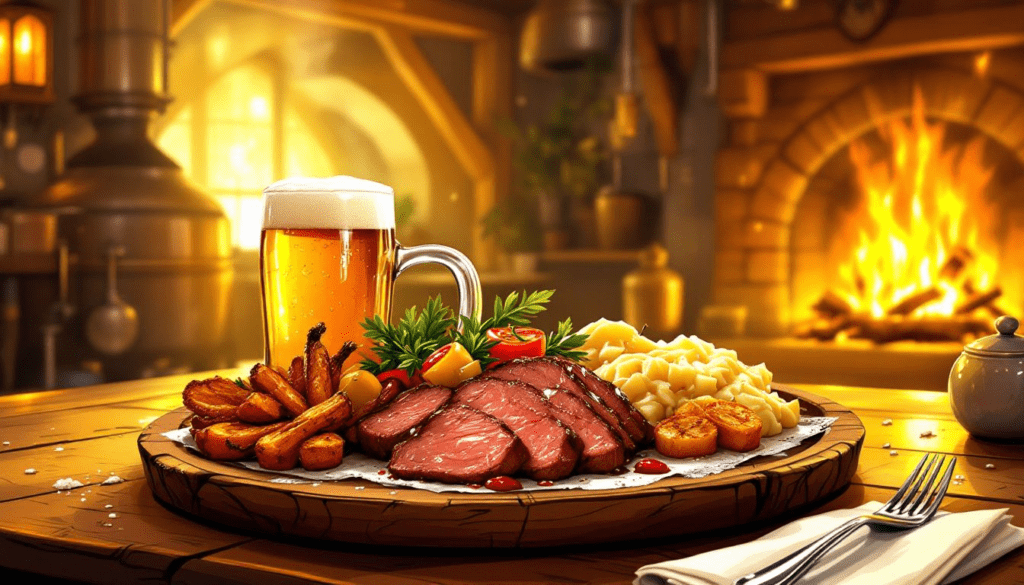Beer is a timeless beverage enjoyed around the globe. But what exactly is beer, and why is it so beloved? This guide covers everything from its ancient history and diverse styles to the brewing process and cultural significance. Perfect for both enthusiasts and those new to beer.
Growlers
Beer has a rich history, dating back to ancient civilizations where it played a significant role in social and daily life.
Different beer styles, like lagers and IPAs, have unique flavor profiles that can enhance food pairings and overall enjoyment.
Homebrewing has become increasingly popular, allowing enthusiasts to experiment and create personalized beer recipes.
The History of Beer

Beer is one of the earliest beverages created by humans, with references dating back to ancient Egypt and Mesopotamia. The oldest known beer recipe appears in a 3,900-year-old Sumerian poem dedicated to Ninkasi, the goddess of brewing. This ancient connection highlights beer’s deep roots in human civilization.
Evidence suggests that beer-like drinks were being brewed in Neolithic Europe around 5,000 years ago. The earliest confirmed evidence of barley beer was discovered in Iran, dating back about 5,400 years. Beer played a significant role in the daily diet of Egyptians, with workers on the pyramids receiving rations of beer for nourishment. It’s fascinating to think that what we enjoy today has such ancient origins.
In ancient Mesopotamia, brewing was predominantly undertaken by women, a role that was highly respected in society. By the 7th century CE, monasteries in Europe began producing beer for sale, marking a significant shift towards commercial brewing. This period saw beer becoming an integral part of social and religious life.
The Industrial Revolution marked a transition from small-scale home brewing to large-scale industrial production. This era brought about the mechanization and standardization of brewing processes, making beer more accessible to the masses. Archaeologists even found a 5,000-year-old beer factory in Egypt, believed to have operated during the reign of King Narmer. This rich history sets the stage for our exploration of the various beer styles available today.
Common Beer Styles
Beer style come in a wide variety, each with unique profiles and characteristics that cater to different tastes and occasions. Understanding these styles can enhance your appreciation and enjoyment of beer.
Lagers, such as Budweiser and Corona, dominate the market globally and are characterized by their crisp and clean taste. Pilsners, light and carbonated lager originating from the Czech Republic, are known for their slightly spicy hop flavor. Mexican lagers often include flaked corn and are commonly served with lime for added flavor. Vienna lagers feature toasted malts that give them an amber hue and a balanced malt and hop flavor.
India Pale Ales (IPAs) are distinguished by their strong hop flavors and aromas, often featuring citrus and tropical fruit notes. New England IPAs (NEIPAs) are less bitter than traditional IPAs and are brewed with oats and wheat for a hazy appearance.
Stouts are dark ales made with roasted barley, commonly imparting flavors of chocolate and coffee, with variations including dry, imperial, and milk stouts. Wheat beers, such as hefeweizen and witbier, utilize a large proportion of wheat in brewing, resulting in a fuller body and unique flavors.
Different beer styles, such as a pilsner or stout, have unique profiles that influence their compatibility with various foods. Knowledge of these styles lets you choose beers that pair well with different meals, enriching your dining experience.
The Brewing Process

The brewing of beer involves several stages, each critical to creating the final product at the brewery. Understanding this process can deepen your appreciation for the craftsmanship involved in brewing.
The process begins with proper sanitization. All tools and containers that come into contact with the wort must be sanitized to ensure a successful brewing process. Mashing involves soaking malted grains in water to convert starches into fermentable sugars, forming the foundation of the beer.
After mashing, the wort is boiled and then quickly chilled to prevent contamination from wild bacteria. Chilling the wort rapidly is crucial to maintain the quality and integrity of the beer.
Fermentation is the stage where yeast is added to the wort, converting sugars into alcohol and carbon dioxide. This process usually takes about two weeks, with the first five days showing active fermentation. Calculating the alcohol by volume (ABV) requires measuring the final gravity of the beer before bottling.
Modern brewing methods allow for precise control over various factors such as temperature and specific gravity, leading to consistent quality. The introduction of equipment like the hydrometer and centrifuge has significantly improved the efficiency of modern brewing. This intricate process highlights the art and science behind every brew.
Ingredients in Beer
Beer primarily consists of four essential components: water, grains, hops, and yeast, each playing a critical role in flavor and aroma. Let’s take a closer look at these ingredients and their contributions.
Water constitutes over 99% of beer’s composition and significantly influences its overall taste and mouthfeel. The mineral content and purity of the water can affect the brewing process and the final product.
Grains provide key attributes to beer, including distinct flavors ranging from bread-like to chocolatey. They also contribute to the beer’s color and fermentable sugars. The choice of grains can dramatically alter the beer’s profile.
Hops not only add bitterness and aroma but also possess antimicrobial properties which help in preserving the beer. Different hop varieties can introduce a range of flavors, from floral to fruity to earthy.
The fermentation process involves yeast consuming sugars from the wort, resulting in alcohol production and the creation of unique flavors. Yeast type significantly impacts the beer’s character, underscoring its importance in the brewing process.
Popular Beer Trends

The beer industry is constantly evolving, with new trends emerging that shape how we experience and enjoy beer. One significant trend is the rise of the craft beer movement, with smaller breweries becoming increasingly popular for their unique offerings.
Craft brewers today often experiment with non-traditional ingredients, allowing for a diverse range of flavors in their beers. This creativity has led to innovative brews that push the boundaries of traditional beer styles.
Economic factors also play a role in these trends. Price increases and stronger onsite sales have contributed to the rise in dollar sales of craft beer. This indicates a growing appreciation for quality and uniqueness in the beer market.
How to Store and Serve Beer
Proper storage and serving techniques are crucial to enjoying beer at its best. For tapped kegs, maintaining a temperature of 38 degrees Fahrenheit is essential to prevent flatness and ensure carbonation. Higher ABV beers typically taste better when served at slightly warmer temperatures, around 45-50 degrees, enhancing their flavor. Serving beer at the correct temperature is vital; too cold can mute flavors, while too warm can lead to a flat taste.
Serving beer in a frosted mug can negatively affect its taste due to increased foam and stale flavors from the ice. Using clean, room-temperature glassware helps maintain the beer’s integrity.
Storing beer in a cool, dark place generally helps maintain its quality. Proper storage and serving practices ensure that you can fully enjoy the beer’s intended flavors and aromas.
Pairing Beer with Food

Combining beer with food can greatly enhance flavors, turning meals into delightful culinary experiences. Let’s explore some tips and guidelines for successful pairings.
Matching the intensity of the beer with the dish works well; lighter foods pair nicely with lighter beers. Beginners may find it helpful to match beer and food by color, where lighter beers align with lighter dishes.
Classic pairings include fish and chips with pale ale and steak with porter, adhering to guidelines of matching intensity. Innovative pairings, such as sushi with sour ale, encourage creativity and exploration in food and beer combinations.
Finding common flavors between the beer and the dish can enhance the dining experience, such as pairing citrusy hops with Thai curry. Creating contrasts can also be effective; for instance, oysters paired with stout can lead to a delightful culinary experience.
Regional pairings work well, as local beer and cuisine often share flavor profiles. Personal preferences regarding taste, texture, and previous experiences play a significant role in beer and food pairings. Experimenting with different combinations can lead to surprising and delightful culinary discoveries.
Health Benefits and Risks
Moderate alcohol consumption, including beer, may lower the risk of heart disease in healthy individuals. Regular intake of light to moderate amounts of beer is associated with improved cognitive function in older men. Additionally, drinking beer in moderation may reduce the likelihood of developing type 2 diabetes. Moderate beer consumption is also linked to increased bone density in postmenopausal women.
However, excessive alcohol consumption can lead to serious health issues, including liver disease and various cancers. Drinking alcoholic beer during pregnancy poses risks like birth defects and developmental issues. Alcoholic beer can exacerbate conditions like high blood pressure, gout, and gastrointestinal disorders.
Balancing the benefits of moderate beer consumption against the risks of excessive intake is crucial for health. Enjoying beer responsibly and understanding its potential health impacts is crucial.
Beer Culture Around the World
Beer often reflects the societal preferences and cultural practices of regions around the world. In ancient Rome, beer was less favored compared to wine, which dominated the drinking culture. Societal preferences and cultural practices influence how beer is consumed and appreciated in different countries.
For example, Germany is renowned for its beer culture, with Oktoberfest being a global symbol of beer celebration. Belgium is famous for its wide variety of beer styles, including Trappist ales brewed by monks.
In many countries, beer is enjoyed year-round, with local brewers crafting unique beers that reflect regional tastes and traditions. Examining beer culture globally reveals how this cherished drink connects with the history and identity of various societies.
Home Brewing Basics
Homebrewing has surged in popularity, giving enthusiasts the chance to create unique recipes and styles on a smaller scale. The beauty of homebrewing lies in the ability to experiment and craft a beer that’s truly your own.
A home brewing starter kit typically includes essential items such as fermenting and bottling buckets, a hydrometer, and sanitizer. A basic brew kettle should hold at least 7-8 gallons to accommodate standard 5-gallon brewing batches. Using a propane burner for boiling is recommended for effective heat control during the brewing process.
Starting with extract recipes is a straightforward way for beginners to enter home brewing without requiring extensive equipment. Extract brewing allows beginners to use pre-processed sugars, making the process easier compared to all-grain brewing. This approach helps new brewers gain confidence before tackling more complex methods.
Homebrewing provides both a creative outlet and a deeper insight into the brewing process. It’s a refreshing and rewarding hobby that can lead to a greater appreciation of the wide world of beer.
Summary
Beer is a timeless beverage with a rich history and a vibrant present. From its ancient origins in Egypt and Mesopotamia to the diverse beer styles enjoyed today, beer continues to evolve and captivate enthusiasts worldwide. Understanding the brewing process, the ingredients involved, and the proper ways to store and serve beer can enhance your appreciation and enjoyment of this beloved drink.
We’ve explored the latest trends, the art of pairing beer with food, and the health benefits and risks of beer consumption. Whether you’re interested in the cultural significance of beer around the world or eager to try your hand at homebrewing, there’s always something new to learn and experience. So, here’s to exploring the rich, complex, and delicious world of beer—cheers!
Frequently Asked Questions
What are the main ingredients in beer?
The main ingredients in beer are water, grains, hops, and yeast. Each of these components contributes to the overall flavor and aroma, making every brew unique!
How does the brewing process work?
Brewing is a fascinating journey that includes stages like malting, mashing, boiling, fermentation, and packaging, all essential for crafting that perfect beverage. It’s all about the careful steps that bring out the rich flavors we love!
What are some popular beer styles?
Some popular beer styles you might enjoy are lagers, pilsners, IPAs, stouts, and wheat beers, each offering its own unique flavor. Give them a try to see which one you like best!
How should beer be stored and served?
To enjoy your beer at its best, store it in a cool, dark place and serve higher ABV beers at around 45-50 degrees Fahrenheit. This little tip can greatly enhance your tasting experience!
What are the health benefits and risks of drinking beer?
Drinking beer in moderation can lower the risk of heart disease and boost brain health, but overindulging can lead to significant health problems. Always remember, moderation is key!


Leave a Reply